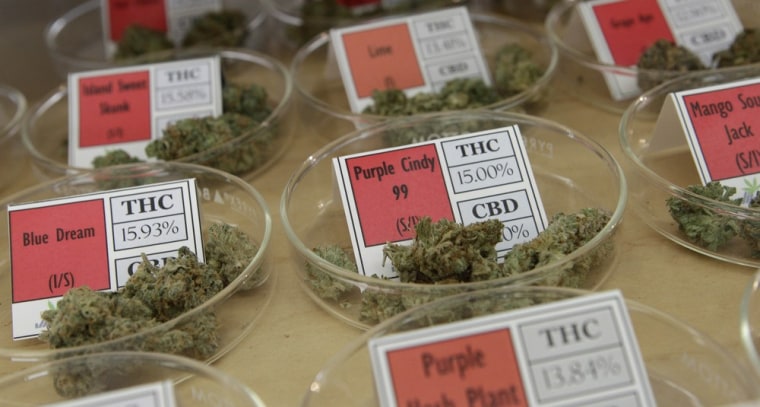There is a noticeable aroma wafting around the medical marijuana industry. It’s the smell of money — with a strong hint of entrepreneurial opportunity.
Medical marijuana is now a $1.7 billion market, according to a report released Wednesday by See Change Strategy, an independent financial analysis firm that specializes in new and unique markets. The figure represents estimated sales of marijuana through dispensaries in states with medical marijuana laws. It is the first time a definitive dollar figure has been given to the emerging medical cannabis industry.
To put that number in perspective, sales of medical marijuana rival annual revenue generated by Viagra, a $1.9 billion business for Pfizer.
The rising sales are generating growing interest from entrepreneurs and even some venture capitalists as the medical marijuana market is expected to nearly double in the next five years just in the 15 states where the drug has some protection under the law. If another 20 states pass medical marijuana laws — as the study projects is possible — the market could grow to $8.9 billion in 2016.
“Hundreds of businesses exist around the country that cultivate and sell marijuana to customers. Many of these businesses emerged in the wake of the Obama administration’s decision to deprioritize federal prosecutions of individuals and business complying with state medical marijuana laws,” said Ted Rose, editor of the report.
Rose’s report focused exclusively on the quasi-legal medical marijuana industry in 15 states and the District of Columbia. The cannabis industry as a whole — including the underground black market and medical gray market — generates anywhere from $18 billion to $35.8 billion a year. That is a huge variance and demonstrates the quickly shifting landscape of the industry — and the unreliability of data about an enterprise that is considered strictly illegal by the federal government.
“We undertook this effort because we noticed a dearth of reliable market information about this politically charged business," Rose said.
Troy Dayton, CEO of the San Francisco-based angel investor network ArcView Group, agrees. "There are a lot of investors sitting on the sidelines because they have no idea about the size of the market. The See Change report changes the dynamics for the investment community."
Among the other highlights of the report:
California and Colorado account for 92 percent of the wholesale and retail sales nationally.
Arizona, Michigan and Washington are considered well-positioned for significant growth.
There are 24.8 million potential consumers for medical marijuana in the United States today. This number reflects the number of Americans with qualifying ailments who live in a current "legal state."
Business owners say the largest hurdle to success is not financing, but regulatory uncertainty.
Nearly two-thirds of businesses surveyed — 63 percent — have been in business for less than one year.
Jeffrey Miron, director of undergraduate studies at Harvard's Economics Department, has studied and written extensively about drug prohibition, and agrees with the major findings of the 92-page market analysis, which is being sold for $1,150 to interested customers.
“Finding real dollar numbers in this industry is difficult, but this data seems plausible. It certainly isn’t loony to suggest that there is currently $1.7 billion in the medical marijuana marketplace.”
Miron, however, scoffs at the $35.8 billion figure bandied about for the overall market. Miron estimates the total market at $18 billion — the same number arrived at by the See Change study. Jon Gettman, a marijuana reform activist and author of the 2006 study "Marijuana Production in the United States," arrived at the higher figure.
“Look, alcohol is a $50 billion industry in this country, and about half of adult consumers participate in this market on a regular basis. Only 5 percent of American adults participate in the marijuana market. To suggest that the marijuana industry currently is more than double the size of the alcohol industry just does not pass the sniff test,” Miron said.
The See Change study says investment and business development will be dampened unless the federal government alters its 74-year prohibition on cannabis and its 41-year war on drugs.
"Frankly, the uncertainty of the regulatory landscape has been a deterrent to attracting investors," Dayton said. "But investors understand uncertainty. They understand risk. But investors demand metrics. This report is a big win for investors."
According to the ArcView Group, there is currently about $1 billion worth of opportunity for ancillary businesses serving retailers. This includes everything from testing labs to insurance companies to software developers.
"We're witnessing the beginnings of a legal business ecosystem around marijuana," Rose, the author of the study, said.
More information:
